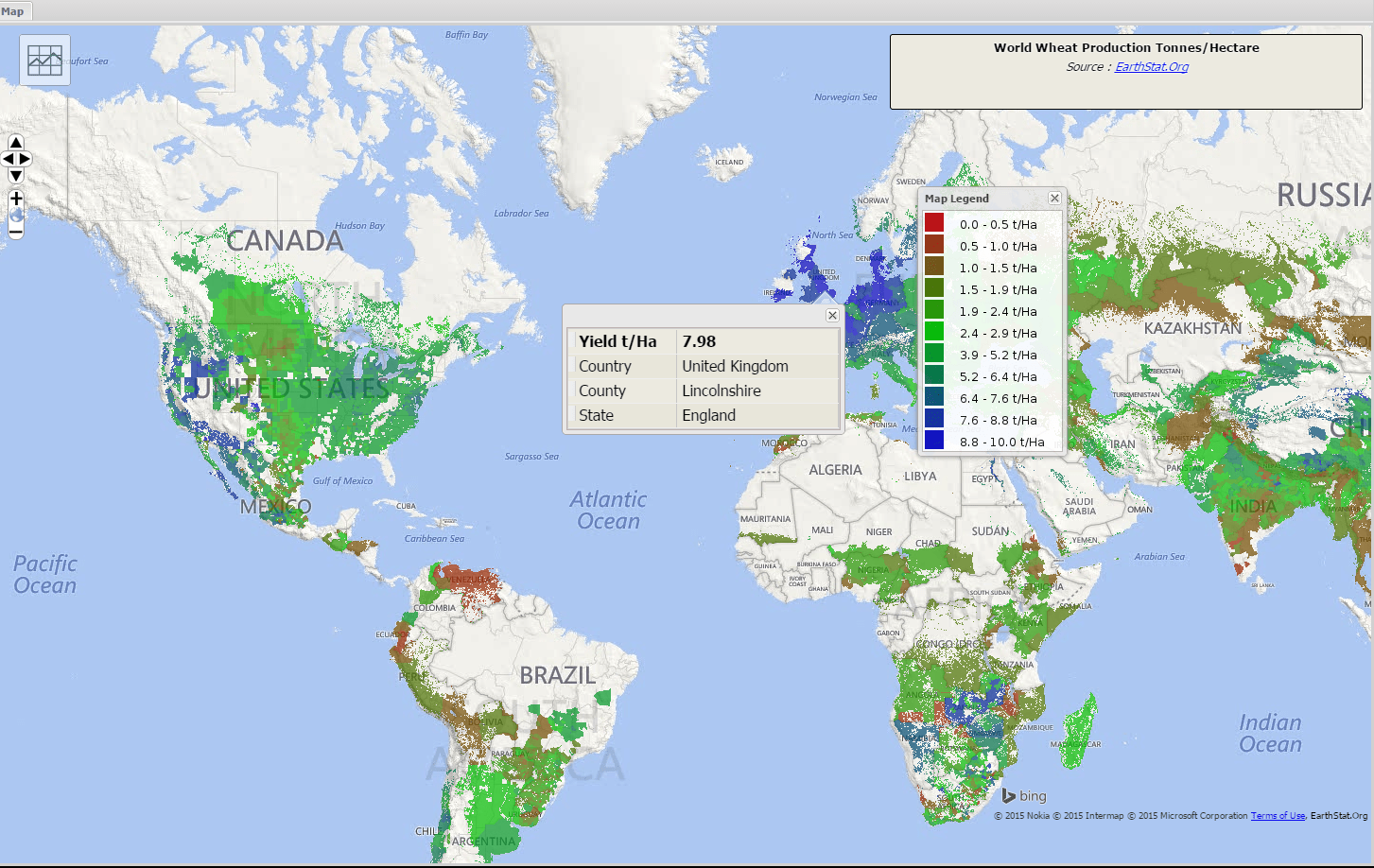A common complaint from investors wanting to invest in agriculture globally is the lack of available data about farmland returns.
In the U.S. the National Council of Real Estate Investment Fiduciaries provides a useful source of farmland performance data, Peak Soil Indexes recently launched state-specific indices for the country, and in the U.K. a range of estate agents present quarterly data too. But these are average data, regardless of commodity type and so on. Plus there are few offerings in other parts of the world.
Keen to analyze the sector’s past performance against other asset classes, and to compare farmland returns in different geographies or different commodity types, many institutional investors such as pension funds, unable to do so, have put off investing into the sector.
But one investment firm has built a data platform to answer this call called Map Of Agriculture (MOA).
MOA provides a range of agricultural data from crop performance to soil type, to earnings on a country or state-wide basis, to enable comparisons across countries and regions. The platform allows the visualisation and analysis of farm financial returns and production yields, together with relevant further layers such as agro-ecological and macro-economic data, according to its LinkedIn page.
MOA already covers Australia, the Americas, Europe and New Zealand, but has global aspirations, according to Forbes Elworthy, chairman at MOA and a fifth generation farmer.
“The Map Of Ag team has been keeping a low profile while we build our capabilities,” he said, after three years of working on MOA. “Map Of Ag is well positioned, we believe, to serve the comparative farming system benchmarking needs of farmland investors.”
As the business developed and MOA built a community of farmers and other data participants around it, Elworthy realized that he needed to raise his sights from the relatively small investor market to a much larger audience to justify building the benchmarking and data science capability.
“We are still a very young business, but believe our capabilities can already significantly assist farmers,” he said. “We are enjoying working with leading Ag Service Organisations and Ag Universities in a number of regions to work on farm data management and modelling. We believe in farmer control of their proprietary data, which has struck a real chord with partners.”
The service was first created as a tool for Elworthy’s New Zealand-focused farmland fund management business Craigmore Farming to use in its analysis of investment opportunities using publicly-available data, but it increasingly became useful as a marketing tool with investors.
“This was our point of departure and we have not lost interest in that market,” he said. “Indeed, researching the risks and returns of farming in different parts of the world continues to absorb much of the time of our analyst team. Servicing that market also informs a number of our models. And the farmland investor market still constitutes a significant proportion of our early clients and prospects.”
Whichever direction the company takes, it’s clear the investment market is crying out for data like these to fill in large information gaps about global farmland investment performance.
Have news, tips or want to write a guest article? Email [email protected]




